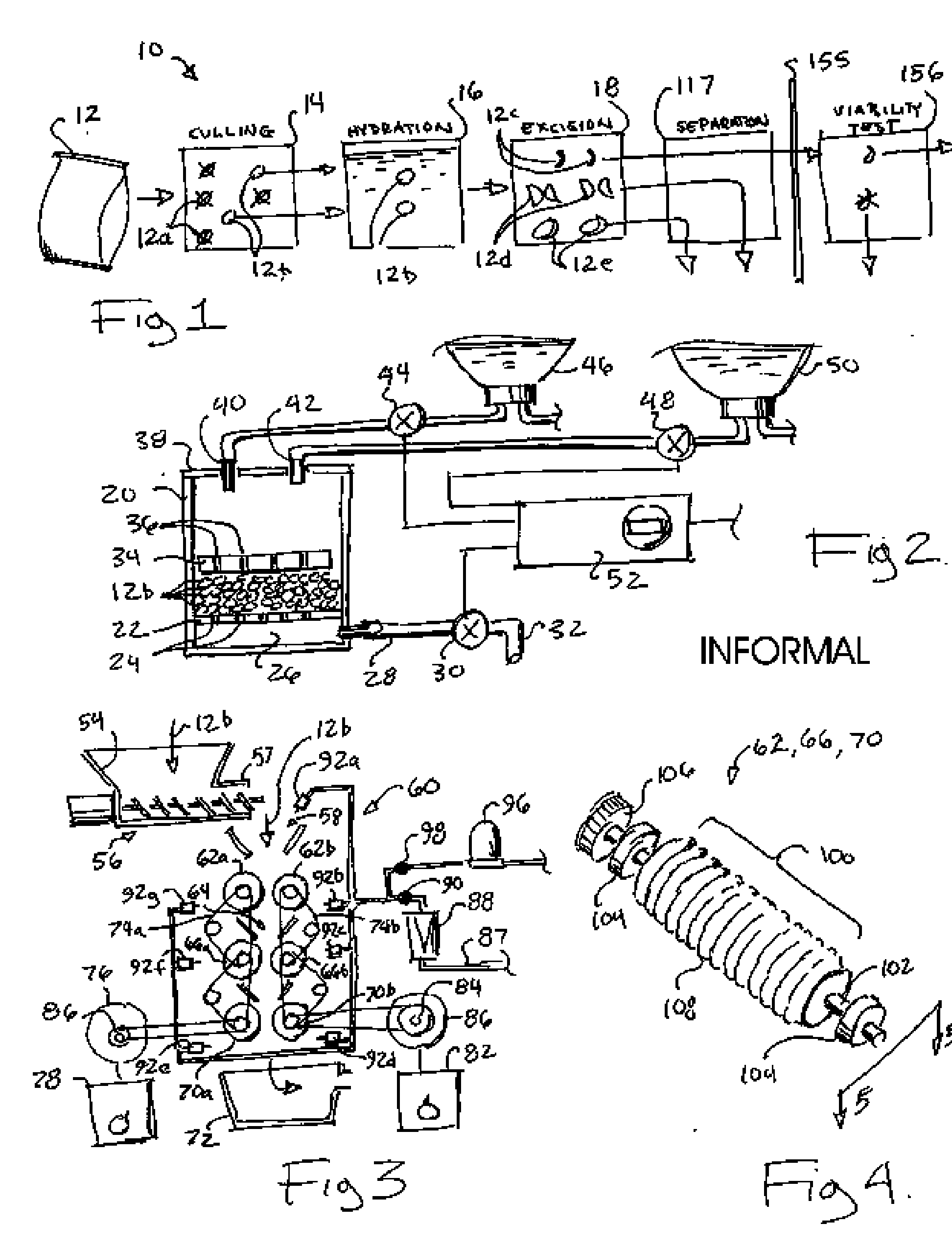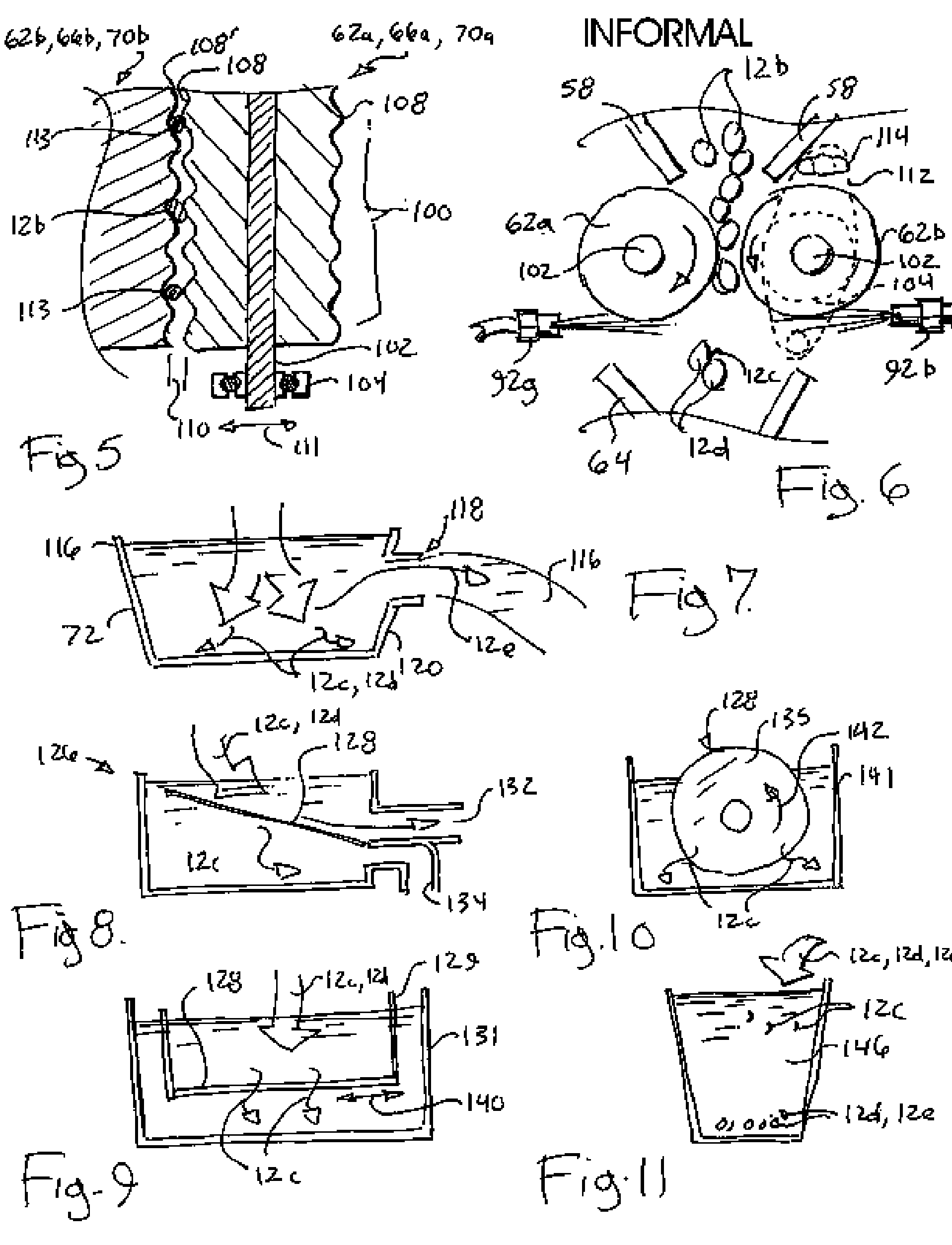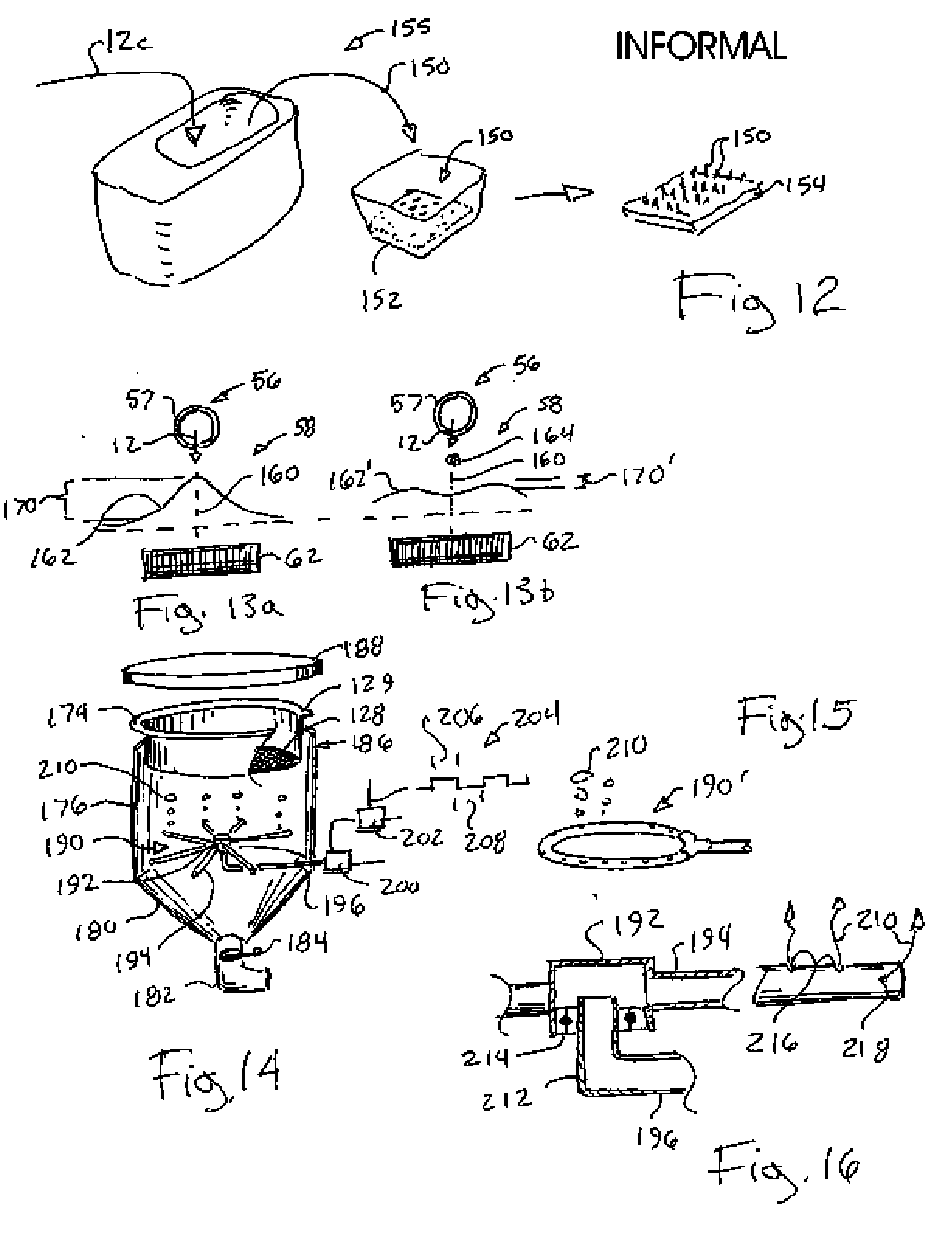Method and apparatus for preparation of genetically transformable plant tissue
- Summary
- Abstract
- Description
- Claims
- Application Information
AI Technical Summary
Benefits of technology
Problems solved by technology
Method used
Image
Examples
Embodiment Construction
[0069] Referring now to FIG. 1, generally the mechanized method 10 of the present invention receives harvested soybeans or other seeds 12 from which transformable plant tissue will be extracted. The seeds 12 are ideally harvested at a predetermined internal moisture suitable for isolating transformable material therefrom, e.g., 8-14% internal moisture for soybeans, and held in stable storage conditions prior to use.
[0070] The seeds 12 may be subject to an optional culling step 14 intended to remove seeds 12a with a high degree of bacterial or fungal contamination and also seeds 12a that may for any reason statistically fail to produce viable embryonic tissue with the present invention. These latter reasons may include parameters such as the size of the seed or other physical characteristics that in other contexts would be unobjectionable and may be adjusted empirically by variation of the parameters and measurement of ultimate yields of the viable tissue.
[0071] Preferably, the cul...
PUM
| Property | Measurement | Unit |
|---|---|---|
| Time | aaaaa | aaaaa |
| Force | aaaaa | aaaaa |
| Flow rate | aaaaa | aaaaa |
Abstract
Description
Claims
Application Information
 Login to View More
Login to View More - R&D
- Intellectual Property
- Life Sciences
- Materials
- Tech Scout
- Unparalleled Data Quality
- Higher Quality Content
- 60% Fewer Hallucinations
Browse by: Latest US Patents, China's latest patents, Technical Efficacy Thesaurus, Application Domain, Technology Topic, Popular Technical Reports.
© 2025 PatSnap. All rights reserved.Legal|Privacy policy|Modern Slavery Act Transparency Statement|Sitemap|About US| Contact US: help@patsnap.com



